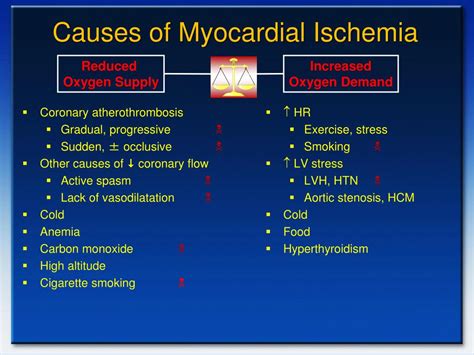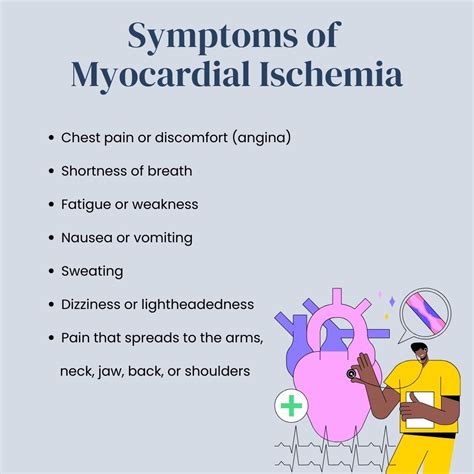consider ischemia or lv overload | left ventricular overload consider ischemia or lv overload Myocardial ischemia occurs when blood flow to the heart muscle (myocardium) is obstructed by a partial or complete blockage of a coronary artery by a buildup of plaques (atherosclerosis). If the plaques rupture, you can have . Product details. Delivery & Returns. Gifting. OnTheGo MM. S$ 4,950.00. Call for Enquiry. LOUIS VUITTON Official site - OnTheGo MM Bicolour Monogram Empreinte Leather is exclusively on louisvuitton.com and in Louis Vuitton Stores. Discover more of our Handbags Designer Leather Tote Bags for Women Collection by Louis Vuitton.
0 · what causes myocardial ischemia
1 · what causes ischemia in men
2 · myocardial ischemia weight gain
3 · myocardial ischemia high cholesterol
4 · myocardial ischemia et al
5 · left ventricular volume overload pathology
6 · left ventricular overload
7 · high blood pressure and ischemia
The electrifying ambiance of First Friday is not to be missed! Date: First Friday of every month; Time: 5:00 – 11:00 pm; Location: Downtown Las Vegas 18b Arts District; Prepare to embark on an exhilarating art adventure at First Friday. At the core of First Friday lies a celebration of local talent and the power of artistic expression.
Myocardial ischemia occurs when blood flow to the heart muscle (myocardium) is obstructed by a partial or complete blockage of a coronary artery by a buildup of plaques (atherosclerosis). If the plaques rupture, you can have .Left ventricle (LV) pressure overload lesions, such as aortic stenosis (valvular, sub-valvular, and supravalvular), coarctation of the aorta (also discussed below), and other conditions . The major conditions associated with LV volume overload are aortic or mitral valve regurgitation and dilated cardiomyopathy. Other causes of LVH include ventricular septal . Myocardial ischemia reduces blood flow to the heart and may cause chest pain – but not always. Learn all the signs and symptoms and how to treat it.
Heart Disease Guide. What Is Ischemia? Medically Reviewed by James Beckerman, MD, FACC on June 30, 2023. Written by MD Editorial Contributors. Why . LV hypertrophy is a normal physiologic response to pressure and volume overload. Like any muscle, the heart grows bigger when it is forced to pump harder. In LV hypertrophy, the muscle fibers in the heart’s main .
No. The early repolarization pattern on electrocardiography (ECG) in asymptomatic patients is nearly always a benign incidental finding. However, in a patient with a history of idiopathic ventricular fibrillation or a family history of .Post-ischemic left ventricular (LV) remodeling is a biologically complex process involving myocardial structure, LV shape, and function, beginning early after myocardial infarction (MI) .

louis vuitton virgil jacket
The imbalance between the increased LVM and blood supply may lead to ischemia with additional subsequent damage of the myocardium. The changes in electrical properties include changes in action potential . Uncontrolled high blood pressure is the most common cause of left ventricular hypertrophy. Complications include irregular heart rhythms, called arrhythmias, and heart failure. Treatment of left ventricular hypertrophy depends on the cause. Treatment may include medications or surgery. Myocardial ischemia occurs when blood flow to the heart muscle (myocardium) is obstructed by a partial or complete blockage of a coronary artery by a buildup of plaques (atherosclerosis). If the plaques rupture, you can have a heart attack (myocardial infarction).Left ventricle (LV) pressure overload lesions, such as aortic stenosis (valvular, sub-valvular, and supravalvular), coarctation of the aorta (also discussed below), and other conditions associated with systemic hypertension.
The major conditions associated with LV volume overload are aortic or mitral valve regurgitation and dilated cardiomyopathy. Other causes of LVH include ventricular septal defects, hypertrophic cardiomyopathy, and physiologic changes associated with intense athletic training. Myocardial ischemia reduces blood flow to the heart and may cause chest pain – but not always. Learn all the signs and symptoms and how to treat it. Heart Disease Guide. What Is Ischemia? Medically Reviewed by James Beckerman, MD, FACC on June 30, 2023. Written by MD Editorial Contributors. Why Does It Happen? What Problems Does Ischemia. LV hypertrophy is a normal physiologic response to pressure and volume overload. Like any muscle, the heart grows bigger when it is forced to pump harder. In LV hypertrophy, the muscle fibers in the heart’s main pumping chamber enlarge and, over time, thicken.
No. The early repolarization pattern on electrocardiography (ECG) in asymptomatic patients is nearly always a benign incidental finding. However, in a patient with a history of idiopathic ventricular fibrillation or a family history of sudden cardiac death, the finding warrants further evaluation.
Post-ischemic left ventricular (LV) remodeling is a biologically complex process involving myocardial structure, LV shape, and function, beginning early after myocardial infarction (MI) and lasting until 1 year.
The imbalance between the increased LVM and blood supply may lead to ischemia with additional subsequent damage of the myocardium. The changes in electrical properties include changes in action potential morphology, duration, and conduction velocity (CV) affecting electrical impulse propagation. Uncontrolled high blood pressure is the most common cause of left ventricular hypertrophy. Complications include irregular heart rhythms, called arrhythmias, and heart failure. Treatment of left ventricular hypertrophy depends on the cause. Treatment may include medications or surgery. Myocardial ischemia occurs when blood flow to the heart muscle (myocardium) is obstructed by a partial or complete blockage of a coronary artery by a buildup of plaques (atherosclerosis). If the plaques rupture, you can have a heart attack (myocardial infarction).Left ventricle (LV) pressure overload lesions, such as aortic stenosis (valvular, sub-valvular, and supravalvular), coarctation of the aorta (also discussed below), and other conditions associated with systemic hypertension.
The major conditions associated with LV volume overload are aortic or mitral valve regurgitation and dilated cardiomyopathy. Other causes of LVH include ventricular septal defects, hypertrophic cardiomyopathy, and physiologic changes associated with intense athletic training.
Myocardial ischemia reduces blood flow to the heart and may cause chest pain – but not always. Learn all the signs and symptoms and how to treat it. Heart Disease Guide. What Is Ischemia? Medically Reviewed by James Beckerman, MD, FACC on June 30, 2023. Written by MD Editorial Contributors. Why Does It Happen? What Problems Does Ischemia. LV hypertrophy is a normal physiologic response to pressure and volume overload. Like any muscle, the heart grows bigger when it is forced to pump harder. In LV hypertrophy, the muscle fibers in the heart’s main pumping chamber enlarge and, over time, thicken.
No. The early repolarization pattern on electrocardiography (ECG) in asymptomatic patients is nearly always a benign incidental finding. However, in a patient with a history of idiopathic ventricular fibrillation or a family history of sudden cardiac death, the finding warrants further evaluation.
Post-ischemic left ventricular (LV) remodeling is a biologically complex process involving myocardial structure, LV shape, and function, beginning early after myocardial infarction (MI) and lasting until 1 year.
what causes myocardial ischemia

FLĪŽU KOLEKCIJAS NO EIROPAS TOP RAŽOTĀJIEM. Mūsu flīžu salona sortimentā ir augstākās kvalitātes flīzes no Itālijas. Piedāvājumā gan akmens masas, gan keramikas flīzes. Flīzes fasādei, virtuvei, vannas istabai, terasei.
consider ischemia or lv overload|left ventricular overload
























